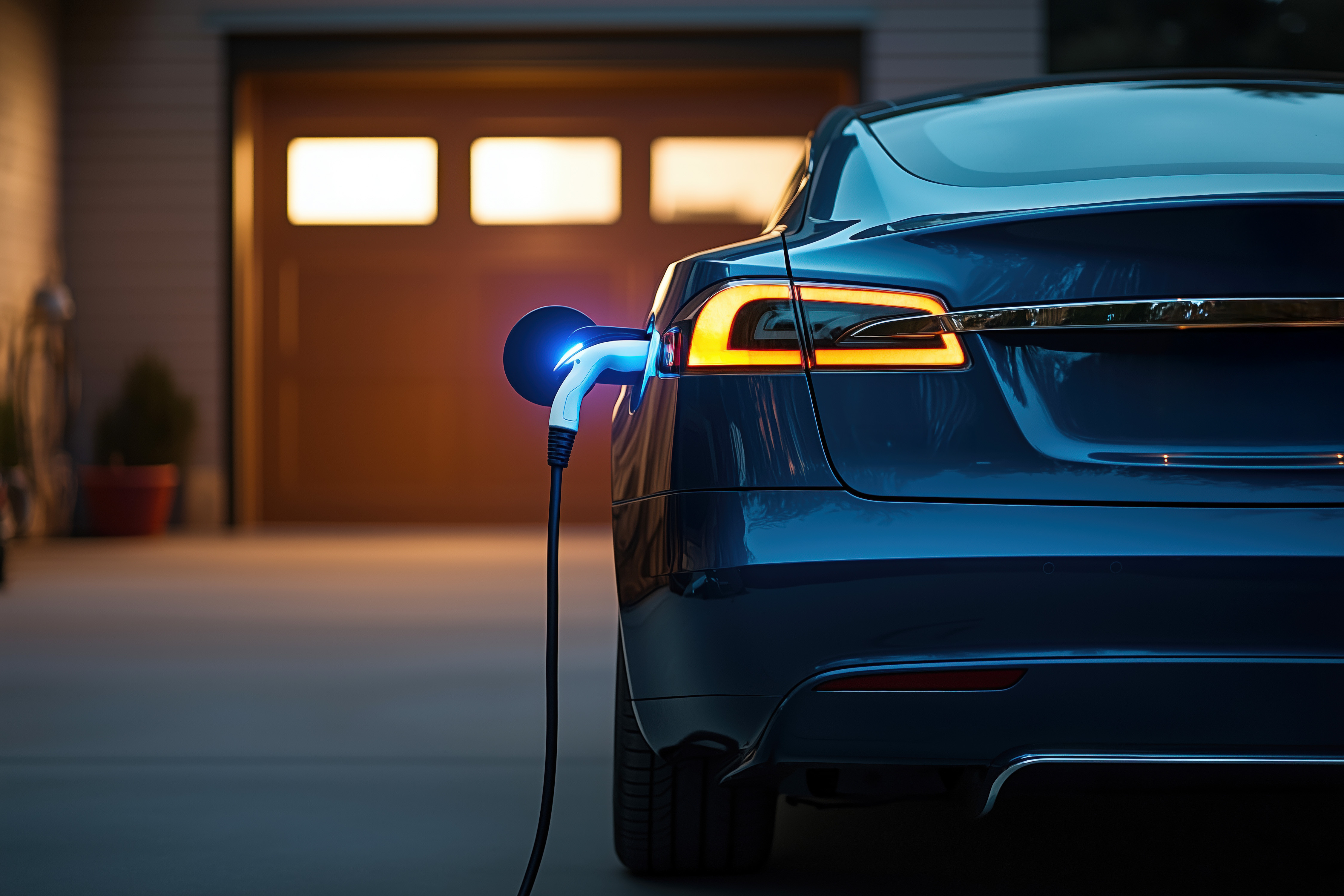As electric vehicles (EVs) continue to gain popularity, many households now ponder the practicality of owning not just one, but two EVs. Using a single EV home charger has become commonplace, but what about two? At Gexa Energy, we recognize the evolving energy needs of our customers and are here to help you navigate the charging of multiple EVs at home efficiently and sustainably.
{{CTA-EV-to-Solar}}
Charging Multiple EVs at Home
Charging two electric vehicles at home is not only feasible but is increasingly becoming a standard practice for households with more than one EV. The current state of home charging infrastructure, coupled with advances in charging technology, supports the simultaneous charging of multiple vehicles. However, the efficiency of this setup depends on several key factors including charging equipment, power capacity, and your home’s electrical system.
Home Charging Infrastructure
Charging multiple EVs at home requires careful planning and consideration of your home’s electrical system's capacity. The standard electric vehicle home charger operates on Level 2 charging, which is significantly faster than plugging into a regular outlet (Level 1 charging). A Level 2 charger typically requires a 240V outlet and can charge a single EV overnight.
Charging Equipment Requirements
You will need a dual EV charger for home (also called an EV charger splitter) or two separate EV charging stations to charge two EVs simultaneously. Dual EV chargers are designed specifically for this purpose and can provide a convenient solution. These chargers vary in power output and charging speeds, so choosing the right one is crucial.
Power Capacity and Electrical System Considerations
The capacity of your home’s electrical system is another vital consideration. Most single-family homes are equipped with 200-amp service, which may suffice for adding one or two Level 2 EV chargers. Level 2 chargers typically require a 240V outlet and can draw anywhere from 16 to 50 amps, depending on the model and charging speed. To determine if your house can handle a Level 2 EV charger, or more importantly, two of them, you must assess your current electrical load and the capacity for additional demand.
Optimizing Your Home Charging Setup
To efficiently charge two EVs at home, consider the following tips for your home EV charging station:
- Scheduled Charging: Use smart chargers that allow you to schedule charging during off-peak hours to enjoy potentially lower electricity rates.
- Load Management: Some dual chargers have load management features, allowing them to adjust the charging rate based on total demand and available capacity.
- System Upgrades: Consider upgrading your home’s electrical system to support the increased load. This can include installing a higher-capacity panel and ensuring your wiring is up to the task.
Gexa Energy offers a range of EV charging solutions to support homeowners with multiple electric vehicles. From assessing your home’s readiness for EV charging to installing the right equipment, Gexa Energy can provide tailored advice and services to ensure your charging setup can meet your needs.
Alternative Ways to Charge Two EVs at Home
When a dual EV charger isn't a feasible option, several alternative strategies can ensure both of your electric vehicles stay charged without needing significant electrical upgrades or installing a dedicated dual charging station. These alternatives can be cost-effective and efficient, providing flexibility for EV owners.
Sequential Charging With a Single EV Charger
Using a single Level 2 charger to alternate the charging of two vehicles can be a straightforward solution. This method requires planning to ensure both EVs are charged according to your driving needs. Although it might seem less convenient, it can effectively manage charging without overhauling your home's electrical system. Smart EV home chargers can automate this process by scheduling charging sessions for each vehicle based on your preferences and peak electricity times.
Portable Chargers as a Supplement
Most EVs come with a portable charger that can be plugged into a standard 120V outlet. While these Level 1 chargers are much slower, adding about 4 to 5 miles of range per hour, they can be used to supplement a Level 2 charger. One vehicle can be connected to the Level 2 charger for faster charging, and the other can use the Level 1 charger overnight or during longer parking periods. This approach can balance the need for charging without additional infrastructure.
Utilizing Public Charging Stations
For households where installing a second electric vehicle home charger isn't practical, leveraging nearby public charging infrastructure can be a viable alternative. Public charging stations, especially those offering fast charging, can quickly charge your EVs while you're out running errands or at work. This method can complement home charging, especially for topping up the battery or for the primary charging of a second vehicle.
Final Thoughts
Charging two electric vehicles at home is ultimately about customizing energy solutions to your household's needs. With a variety of options available, from EV charger splitters to smart scheduling, homeowners can tailor their approach to match their daily routines and energy capacities. This flexibility ensures that charging multiple EVs is feasible and convenient, allowing each household to create a system that works best for them.
Related Reading:






































